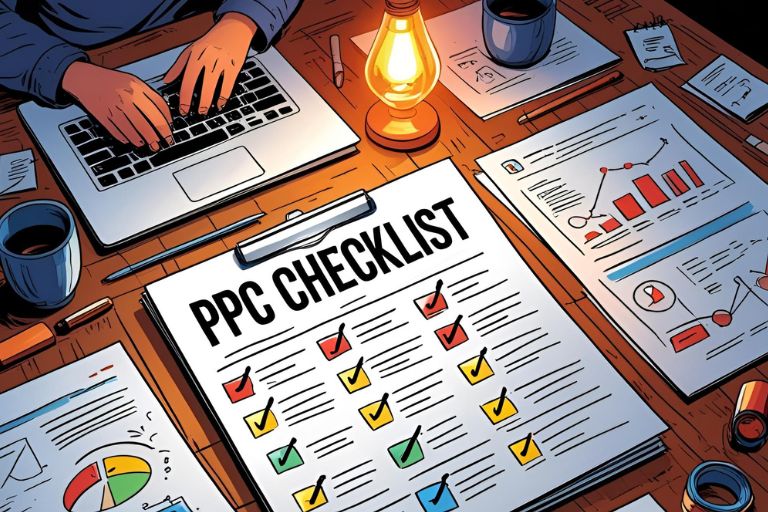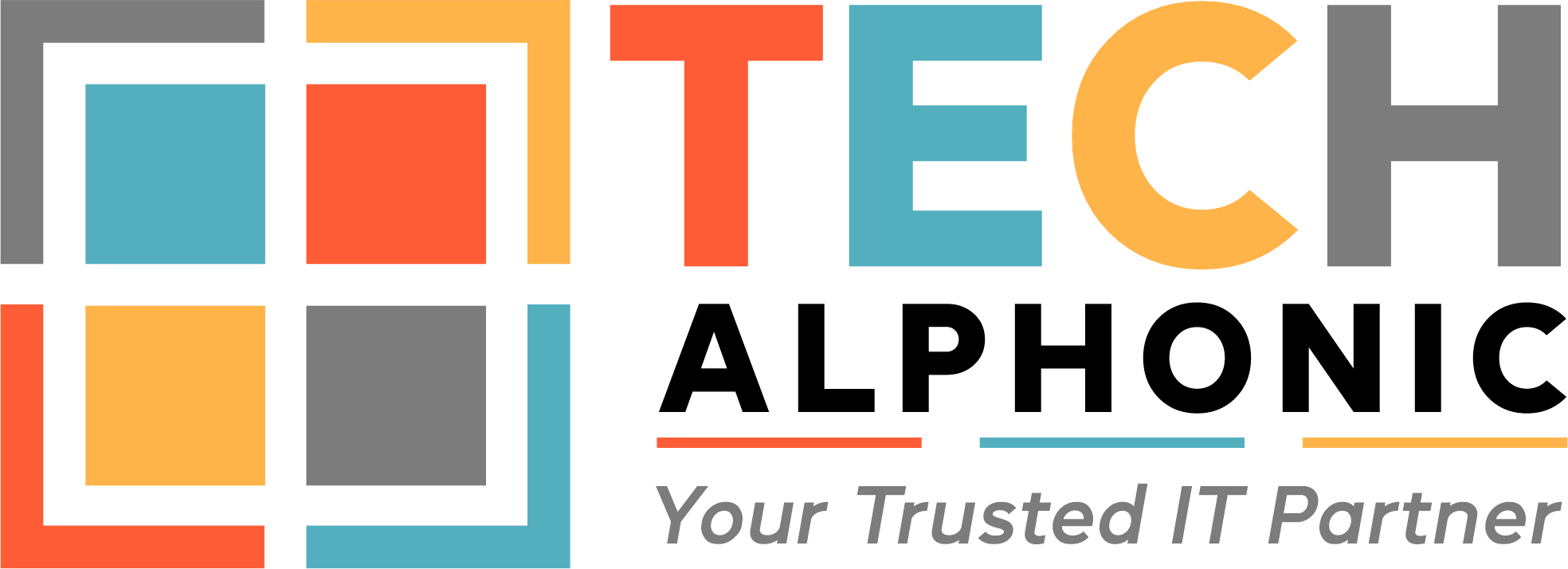Pay-Per-Click (PPC) advertising is not only about launching an ad online as well as hoping that the clicks will come in. It involves making a finely tuned machine that keeps working twenty-four hours a day, carrying qualified leads, increasing visibility, and Driven Sales.
But here is the big question: Are you really doing everything in your power to make the most of your ad performance?
Here at Tech Alphonic, we’ve cemented ourselves as one of the most trusted names within the PPC ad campaign space, helping brands turn mediocre campaigns into revenue-generating engines.
Today, we are bringing this fresh, full PPC checklist under wraps, which goes well beyond the old-fashioned “set your budget and choose your keywords” piece of advice. Whether you’re on Google Ads, on Bing Ads, or doing social PPC, this is how the competition would be outsmarted and get the worth of every ad dollar extended.

Pre-launch: Lay the Foundations like a Pro
Let’s be straightforward: most PPC campaigns die before they ever see the light of day. Why? When businesses skip the strategic prep work.
Here’s how to do it right:
- Crystal-Clear Objectives Definition
What do you REALLY want from your ads?
- Sales on the website?
- Lead Generation?
- Brand Awareness?
Create target-specific goals, such as:
- 500 conversions in 60 days
- 4X Return on Advertising Spend (ROAS)
- 30% reduction in Cost per Acquisition (CPA)
Pro Tip: if you can’t measure, make improvements more challenging.
- Get Very Specific About Audience Personas
A vague “get everyone who likes tech” approach burns through money at an alarming rate. Rather, bonus detailed personas:
Samantha, Small Business Owner—Searches “affordable CRM software,” clicks comparison guides, and prefers video explainers.
Use demographic filters, interests, purchase intent, and even life events to laser-target your audience.
- Picture your customer journey
Mirroring the user journey, here are the steps:
- Awareness: Seeking solutions
- Consideration: Comparing vendors
- Decision: Ready to buy
For each of these, create a campaign and ad group.
Campaign Structure: Build a Foundation Sufficient to Scale
- Organize your Campaigns
Attach 50 keywords to a single ad group, and you won’t be able to lump them just like that. Allow:
- Product categories
- Brand vs generic terms
- High-intent vs low-intent searches
- Easier testing and optimization.
- Use SKAGs Wisely
SKAGs enable you to create hyper-relevant ads, which are accompanied by laser-focused Quality Scores. But don’t go overboard. Pick a handful of your best-performing keywords and create SKAGs just for those.
- Choose the Right Match Types
- Broad Match Mayhem is not good.
- Phrase Match and Exact Match create specificity.
- Layer in Negative Keywords to block irrelevant clicks.
- Creative & Copy: Make Your Ads Prohibited From Ignoring
- Create Headline That Stops Scrolls
“Affordable Software” will not be enough. Test several emotional triggers, and here is what you can use:
“Stop Spending Hours on Spreadsheets—Try This!”
“Ready to Grow Faster? How Top Brands Scale”
- Dynamic Keyword Insertion (DKI)
Inject search terms into headlines to enhance relevance and ultimately CTR.
- Emphasize Benefits > Features
- Feature: “24/7 Assistance”
- Benefit: “Never Be Stuck-Help is Always Just One Call Away.”
- Nail Your Calls to Action (CTAs)
- Beyond “Learn More,” convey that
- Get My Free Audit
- Unlock Your Discount
- Reserve Your Spot Now
- Take Advantage of Ad Extensions
Add Sitelinks, Callouts, Structured Snippets, and Price Extensions to take up more SERP real estate.
Bidding & Budget: Spend Smarter—Not Just Spend
- Use Smart Bidding—But Don’t Be Blind to It
Sample strategies to test:
- Maximize Conversions
- Target CPA
- Target ROAS
Pro tip: Don’t switch to Smart Bidding with fewer than 30 conversions in the last month. Effective data usage is needed for optimization.
- Schedule Your Ads Smartly
Analyse at what times your audience converts. Don’t run ads 24/7 just by default, but run them during peak times.
- Geo-target like a boss
If 80% of your conversions are from certain areas, bid more for that and decrease areas where conversions are low.
- Set Daily and Lifetime Budgets
Control expenditure and avoid budget blowouts; always monitor pacing.
- Install Conversion Tracking Everywhere
You can’t optimize that which you cannot measure.
Set up:
- Google Ads Conversion Tracking
- Google Analytics Goals
- Call Tracking
- Create Fantastic Landing Pages
Never send paid traffic to your homepage.
Your landing page should:
- Mirror messaging in ad
- Load in less than three seconds.
- Have CTA clearly marked.
- Be mobile-optimized.
- A/B Test to the limit
Testing will keep headlines, descriptions, CTAs, and visuals moving. However, pocket change won most of the time on small improvements on many tests.
- Optimize Negative Keywords Continuously
Check your search term reports weekly. Block irrelevant searches to save budget.
- Review Performance Regularly
Every 7 days at the least, check:
- CTR
- Conversion Rate
- CPA
- ROAS
Adjust bids, budgets, and creative accordingly.
- Create Custom Remarketing Lists
Retarget visitors that:
- Abandoned carts
- Spent more than 2 minutes on the site
- Visited the product pages
Serve them personalized ads with special offerings.
- Layer remarketing with similar audiences.
Extend reach to new prospects who behaved like your best customers.
FAQs (Frequently Asked Questions)
Q1: How often should I check on my PPC campaigns?
Ideally, you want to monitor performance on a week-by-week basis and optimize at least once every 7 to 10 days.
Q2: What is the single biggest mistake companies make with PPC?
Sending traffic to generic landing pages while not tracking conversions.
Q3: Should I use automated bidding or manual bidding?
If you have very little data, go with manual bidding at first. After a while, once you have 30 or more conversions, test out a few Smart Bidding strategies.
Q4: How do I lower my Cost Per Click (CPC)?
Increase your Quality Score by:
- Making your ads more relevant
- Optimizing the landing pages
- Improving your click-through rate with catchier headlines
Q5: Why choose Tech Alphonic for your PPC management?
We do not believe in one-size-fits-all strategies. Tech Alphonic designs campaigns uniquely based on data-driven insights, creative ad copy, and continuous optimization, thus allowing your budget to work smarter and not harder.
Ready to Supercharge Your PPC Performance?
If you are tired of below-average performance and desire a partner that knows how to scale campaigns in a profitable manner, Tech Alphonic is ready to help you.
Stop guessing. Start growing. Let’s build you a PPC strategy that gets you noticed—and gets you results.
Today, contact Tech Alphonic and claim your free PPC audit.


